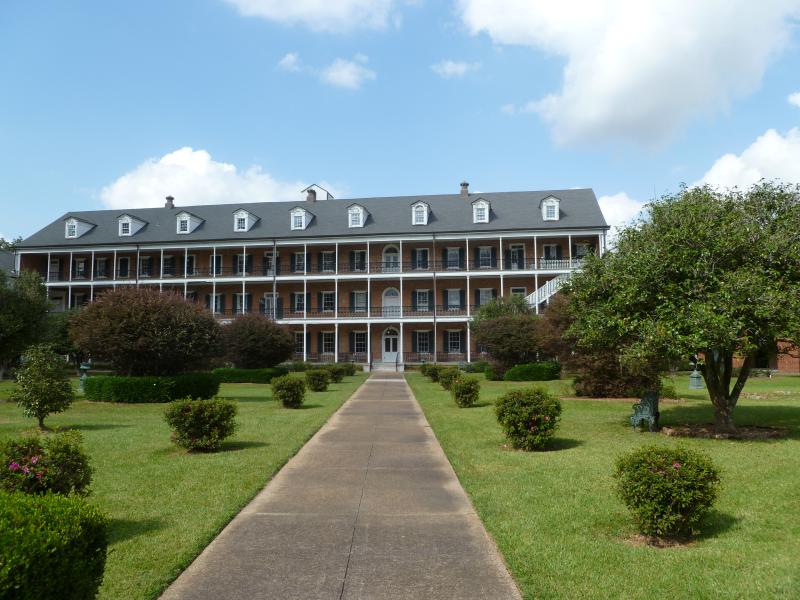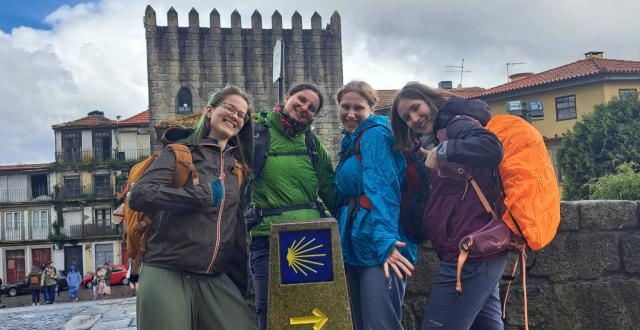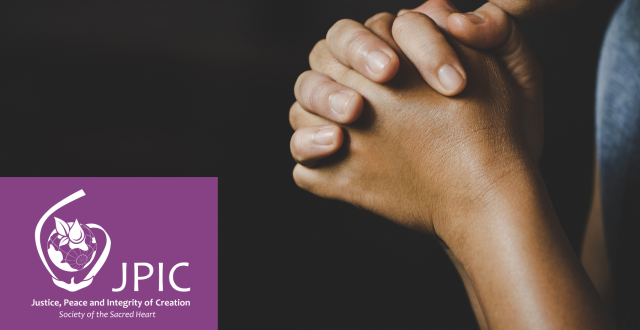
The iconic facade of the Academy of the Sacred Heart in Grand Coteau, Louisiana, (now, with Berchmans Academy, part of Schools of the Sacred Heart) with its long galleries overlooking the formal garden that stretches to the road, stands as the signature of a remarkable Religious of the Sacred Heart, Anna Xavier Murphy, who was superior of the Academy from 1825 to her death in September 1836.
The second set of Sacred Heart missionaries to the United States after St. Philippine Duchesne and her companions were Anna Xavier Murphy and Lucille Mathevon, who arrived in New Orleans February 2, 1822, after fifty-five days at sea. Lucille Mathevon was destined for St. Louis to be with Mother Duchesne, her former teacher at Grenoble, and Xavier Murphy for Grand Coteau, founded just the year before. Their ship-board journals give an insight into Murphy’s character: For Lucile Mathevon, the voyage was dreadful; Xavier called it “a delightful trip.”
Anna Murphy, born in Ireland July 26, 1793, was educated by the Ursulines in Cork and entered the Society of the Sacred Heart in Paris under the direction of Sophie herself, who wrote to Philippine Duchesne in April 1821, “I let you know that a novice who speaks English wants to go to you at her own cost; she chooses our Order in view of America.” Anna received the habit May 5, 1820, and made first vows November 6, 1821, by a special exemption in view of her immanent departure for Louisiana and her total dedication to the Society. Murphy reached Grand Coteau March 20, 1822. Bishop DuBourg decided that she was ready for her final profession; thus she was the first RSCJ to be finally professed in the New World, on May 14, 1822.
When Eugenie Audé and the other founders left for St. Michael’s in 1825, Murphy became superior at Grand Coteau. In 1827 Duchesne wrote “It seems that Xavier pilots this ship very well…she is working wonders…Protestant families who could not bear to hear even the word Catholic without vexation and anger are now saying, ‘We like Mother Xavier’s religion.’” And concerning the Indian girls and orphans in St. Louis, “we can clothe them through gifts from the boarding school in Opelousas…that house is blessed under the guidance of Xavier Murphy.” In 1831 Philippine reported that “Xavier’s reputation is now at its peak, and the last state inspector to visit her school said that among the various notable towns he has visited there was not one school that impressed him more than Grand Coteau, and it was a Protestant who said this.” The baptismal record for the years 1826-1836 shows that sixteen of the forty-nine baptized took Xavier as their baptismal name.
Her building project followed a definite plan resulting in the central building of the Academy, beginning with the first section in 1830; characteristically as the archives show, payments were made as the work progressed and the next two were ready; extensions to this fifty-foot brick building as well as out-buildings followed, and in her last year she saw to the making of 300,000 bricks and all of the lime and the wood for the building of a proper chapel for the Academy.
From her first year in Louisiana her letters mention having a fever, probably malaria. She wrote to Sophie in 1829: “I close this letter with great difficulty; my hand trembles because of the fever which I experience continually. I feel more strength of soul than of body; my spirit is almost always tranquil. I don’t have any taste for prayer. Naked faith is my only support. God gives me a great attraction to poverty.” In August, 1836, she was confined to bed and died September 6th.
Her former student, Rebecca Terrel, wrote: “I am now elderly, I have known the world well, but never have I known, nor do I hope to see another Mother Murphy. Such a combination of gifts, of talents, of virtues is found in very few whom God wishes to serve him to do great things for his glory. Her judgment was sound, just and straight; those in difficult positions came to consult her, she often was able by her wise counsels to reestablish union and peace in families, settling the difficulties that had divided them. The young found in her a support for their weakness; older persons put all their confidence in her.”
~ Mary Blish, RSCJ



